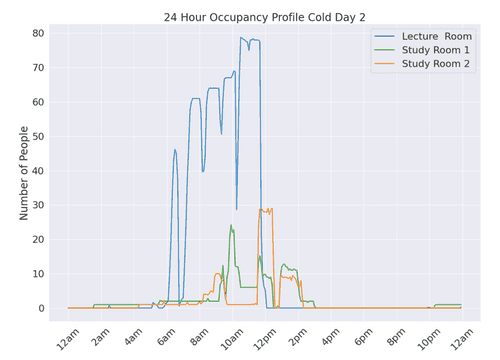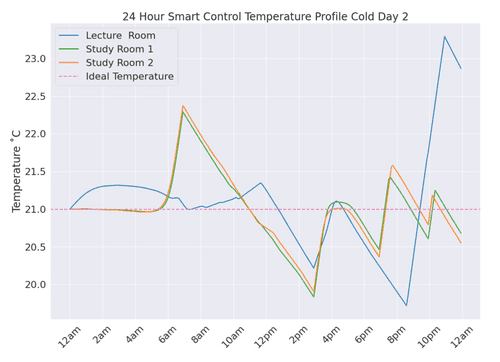Grid Efficient Building Challenge
Optimization of heating times for school buildings
This was the final project for my "Data Science for Public Policy" class. This was a fun project to work on because I got to use data science and deep learning in a very different context. The goal of this project was to use algorithms to increase building efficiency. Our proposal was to use smart vents to cool and heat on a room by room basis. A smart vent is like a regular vent cover, but it can open and close on demand. This directs flow to specific rooms, thus you can climate control only the rooms where you know people will be. Given that room occupancy follows a predictable schedule, especially in schools, we can save tons of money by turning off the climate control for the empty rooms.
Our process was to define a loss loss based off of the temperature in a room multiplied by the number of people currently there. This means that if there were a lot of people in the room at once, and the temperature was way too hot, that would incur a large loss. On the other hand, if the room was empty and the temperature was bad, that's ok. From this loss function, our model learned to pre heat and pre cool rooms in the morning while electricity costs are lower. In addition, it would learn to shut off after its peak occupancy had passed.
Picture 1 shows the occupancy of a given room, and picture 2 shows the learned hvac control. You can see that before the lecture hall reaches its peak, the room is pre heated while electricity is cheap.
Here's the full paper!

